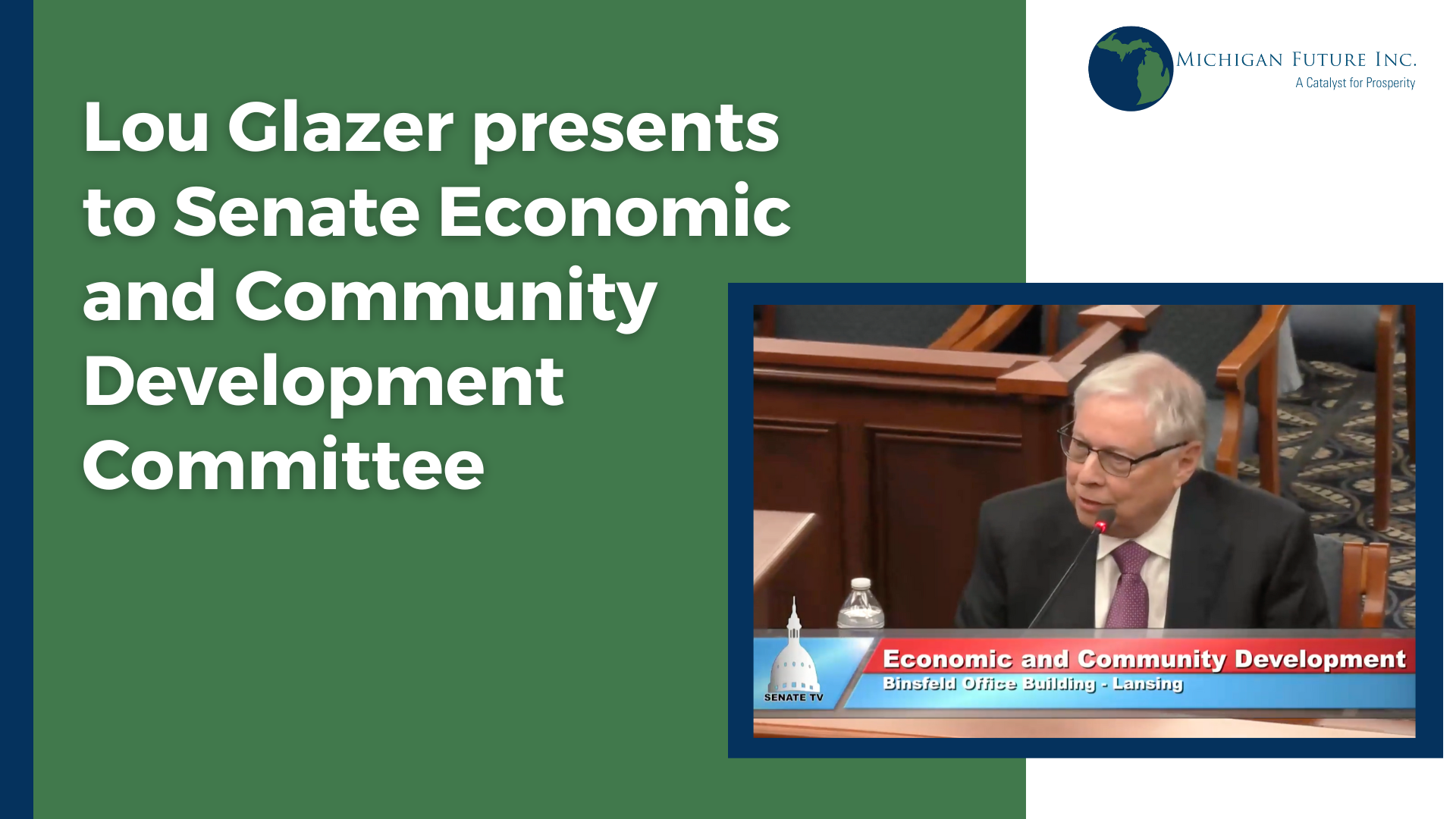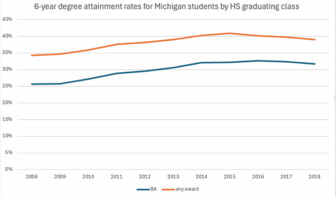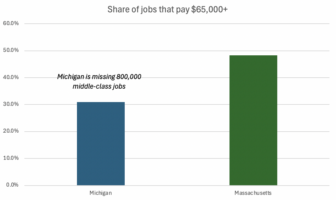The recent Kalamazoo Gazette editorial on our new report included a reference to former Governor Engler, when he was out of office, expressing regret that he just hadn’t written off Detroit and focused on Ann Arbor instead as the economic engine for the Michigan economy. Bad idea! Michigan needs a vibrant Detroit for it to be prosperous again.
But the notion that Ann Arbor is best positioned to drive Michigan’s transition to a knowledge-based economy is widely held across the state. Unfortunately Ann Arbor’s politics make it unlikely to happen. Yes, Ann Arbor is home to the University of Michigan – a world class research university – which is a terrific asset. But to leverage the asset there has to be a large pool of talent that both will attract knowledge-based enterprises and commercialize the ideas coming out of the university. That talent pool won’t concentrate in Ann Arbor as long as it’s politics are anti-growth, particularly anti-density.
The City Council just turned down another development designed primarily for young professionals. It’s a regular occurrence. Is it easier in Ann Arbor to do higher density development today than five years ago? Yes, but it still is real hard.
The result: Ann Arbor has about one third the young professional households as Madison (see our Young Talent in the Great Lakes report). A chief reason, Madison offers the kind of high density, mixed use, walkable neighborhoods that Millennials are looking for, Ann Arbor doesn’t. Ann Arbor may be an interesting place for Boomers to visit with its downtown restaurants, shopping and entertainment, but it’s not a very appealing place for Millennials to live. So Madison is an engine for the Wisconsin economy, Ann Arbor isn’t for Michigan. Unless Ann Arbor becomes much more development friendly and much more responsive to the changing demands for housing and density don’t count on Ann Arbor being an engine for the Michigan economy.






